
FUTURUM / 2018
The Books, the objects and museum.
By Amanda de la Garza (fragment)
Books are first and foremost a civilizing project, they generate stories and a way of organizing the world. In the Futurum series, Humberto Ríos converts a dozen books that talk about the future into naked objects. Through various conceptual strategies, in this series he continues with a systematic task present in previous works, delves into photography as an object, as well as about the different modalities and qualities of the visible, at the same time that he critically dialogues with the history of the photograph.
Through erasure, these books are devoid of all image and language, they only harbor the latency of what was written or imagined written there. However, they incubate the future language of what is about to be known. Different from each other in form, texture, fold, dating and geography, their common language is the omen and their verbal tense the antefuture, that is, a future that is simultaneously past.
The artist explores the consequences of the image outside the image, that is, how the devices of exhibition generate discourses that are endogenous to the images themselves, which articulate them internally. Thus, it chooses a museographic approach that resembles that of the museums of history and anthropology, whose exhibitive modalities are confronted with the modernist searches of the white cube -associated not only with modern and contemporary art, but with the two-dimensionality of the pictorial canvas and then with the photograph. It is through this museographic staging that Ríos manages to emphasize and reveal the way in which these images are submitted to a dramaturgy that is material and not only discursive. Through a double operation, the erasure and the location, manages to make appear the invisible frameworks, like pedestals, which hold these books.
By absence reveals the artifice that defines our relationship with these objects and their representation.
FUTURUM, Humberto Ríos.
By Sandra Rozental (fragment)
These cartographies of signs have been shaped in matter for human beings to interpret and thus, to make both personal and collective decisions. In this sense, inscriptions that deal with the future are always powerful and contested tools. As the anthropologist Alfred Gell noted, systems for ordering time are also always political (1996). It is not a coincidence that almanacs, books of days, calendars, and oracles themselves tend to be associated with power as technologies of state and domination. Who can write, keep, consult and decipher them, is almost as important and restricted as their content. These registers for time-keeping are almost always forbidden objects, carefully controlled by a small minority: the king and his entourage, the priest and his acolytes, or the scribe and a lettered elite. They are part of what Michael Taussig defined as "the magic of the state" that is, the ways in which power operates to control "the knowledge of knowledge that has to be kept inaccessible [or hidden]" (1997). They are, therefore, not easily accessible nor public documents. They lurk in the realm of secrecy. Their content can only be revealed piecemeal or after taking on complex ritual processes.
FUTURUM. por Humberto Ríos.
¿Se puede fotografiar el futuro?
I.Tiempo
Este proyecto investiga la relación entre futuro y fotografía, así como sus asociaciones con la escritura. Bajo una aparente homogeneidad, se representan facsímiles realizados a mano, sobre textos proféticos y premoniciones del futuro en diversos tiempos históricos. Puesto que los originales se han perdido, otros permanecen en ruina en bodegas de museos y algunos más fueron recreados siglos posteriores a su realización; surge un primer cuestionamiento sobre nuestra necesidad ideológica por constituir representaciones utópicas (simulacros, ilusiones y tautologías) como un intento por extender e interpretar nuestra existencia en el tiempo.
II.Incertidumbre
La historia se construye como incertidumbre. El futuro (Del Lat. Futurum) traza su desdoblamiento en "palimpsestos" que oscilan entre original y copia, tergiversaciones e imposiciones dentro de una trama historizante. En este proyecto se cuestiona a la fotografía desde su representación histórica como ilusión, o como una fantasmagoría según Walead Beshty desde un retorno del "simulacro del simulacro." La fotografía es real e inasible, copia y original al mismo tiempo, su referente siempre está ausente y cuando queremos utilizarla para acceder a lo retratado, descubrimos que tenemos una pérdida frente a nosotros que requerimos reconstruir a través de representaciones mentales, igual que sucede con la comprensión misma de la historia.
III.Acontecimiento
Para el filósofo Clément Rosset la pulsión humana por construir un real y su doble, se debe a la dificultad de admitir el frágil término de lo real, motivo por el que los individuos encuentran en el doble (la ilusión), un espacio de proyección más amplio. Es así, que Futuro, Fotografía y Escritura se conjuntan como acontecimiento, sentenciando que como dice Rosset "en ausencia de todo destino, hay ardid, ilusión, engaño". Esta "escritura en negativo" conmemora los vestigios de aquella utopía que implica retener en rastros materiales el ardid del futuro.
IV. Texto
V. Resurrección
La fotografía por su parte, promete un sentido de resurrección (término discutido recientemente por André Rouillié), que deviene como promesa de retorno a través de un dispositivo que nos otorga la capacidad de imaginar un "más allá" en el tiempo, concretizar lo abstracto, prefigurar imágenes sobre un mundo que se ha vuelto impalpable para nosotros. Como apunta Vilém Flusser "Los aparatos son indispensables para que imaginemos".
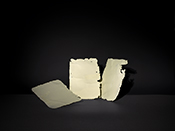


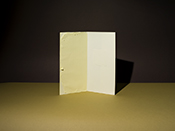
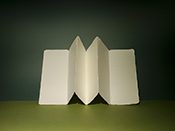

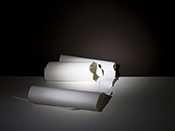
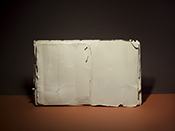
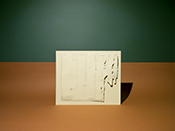
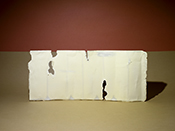

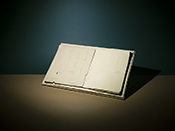


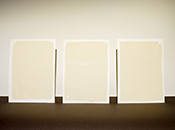



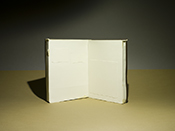




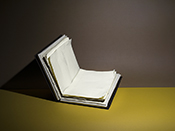
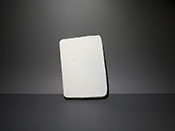





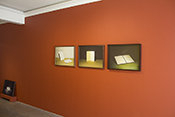
.jpg)
.jpg)